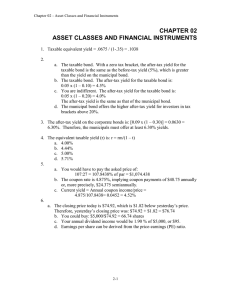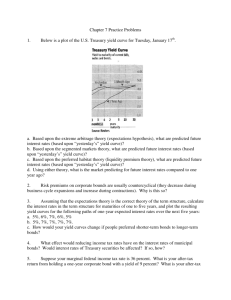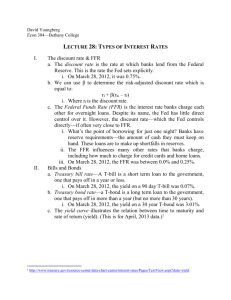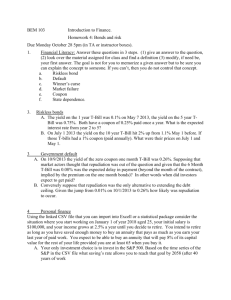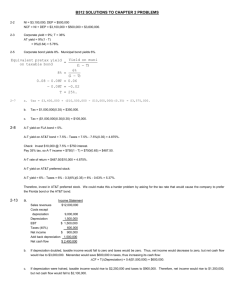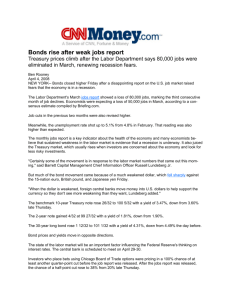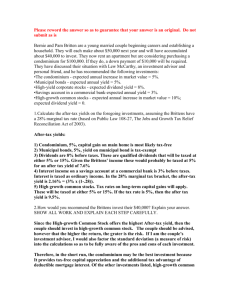HW answers
advertisement
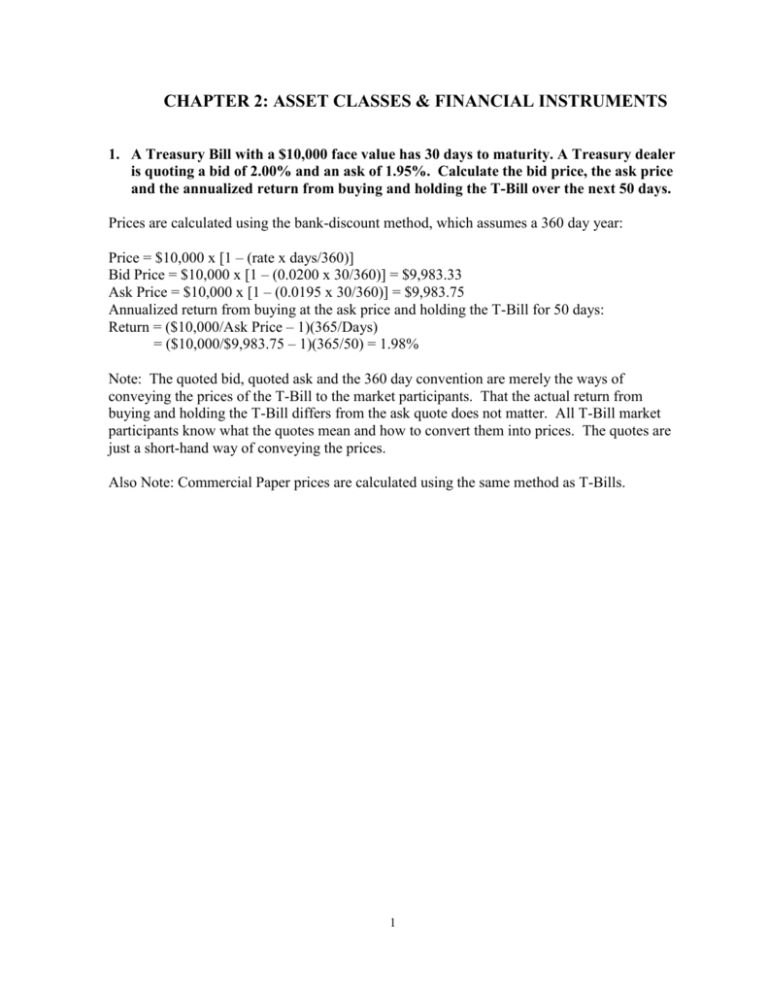
CHAPTER 2: ASSET CLASSES & FINANCIAL INSTRUMENTS 1. A Treasury Bill with a $10,000 face value has 30 days to maturity. A Treasury dealer is quoting a bid of 2.00% and an ask of 1.95%. Calculate the bid price, the ask price and the annualized return from buying and holding the T-Bill over the next 50 days. Prices are calculated using the bank-discount method, which assumes a 360 day year: Price = $10,000 x [1 – (rate x days/360)] Bid Price = $10,000 x [1 – (0.0200 x 30/360)] = $9,983.33 Ask Price = $10,000 x [1 – (0.0195 x 30/360)] = $9,983.75 Annualized return from buying at the ask price and holding the T-Bill for 50 days: Return = ($10,000/Ask Price – 1)(365/Days) = ($10,000/$9,983.75 – 1)(365/50) = 1.98% Note: The quoted bid, quoted ask and the 360 day convention are merely the ways of conveying the prices of the T-Bill to the market participants. That the actual return from buying and holding the T-Bill differs from the ask quote does not matter. All T-Bill market participants know what the quotes mean and how to convert them into prices. The quotes are just a short-hand way of conveying the prices. Also Note: Commercial Paper prices are calculated using the same method as T-Bills. 1 CFA PROBLEMS 1. 2. 3. 4. (d) The equivalent taxable yield is: 6.75%/(1 0.34) = 10.23% (a) Writing a call entails unlimited potential losses as the stock price rises a. The taxable bond. With a zero tax bracket, the after-tax yield for the taxable bond is the same as the before-tax yield (5%), which is greater than the yield on the municipal bond. b. The taxable bond. The after-tax yield for the taxable bond is: 0.05 (1 – 0.10) = 4.5% c. You are indifferent. The after-tax yield for the taxable bond is: 0.05 (1 – 0.20) = 4.0% The after-tax yield is the same as that of the municipal bond. d. The municipal bond offers the higher after-tax yield for investors in tax brackets above 20%. 5. If the after-tax yields are equal, then: 0.056 = 0.08 x (1 – t) This implies that t = 0.30 =30%. 2
